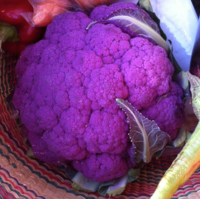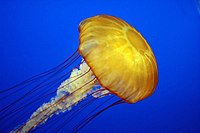
The intensity of blue light-emitting diodes influences the antioxidant properties and sugar content of oyster mushrooms (Lentinus sajor-caju)
Sign Up to like & getrecommendations! Published in 2017 at "Scientia Horticulturae"
DOI: 10.1016/j.scienta.2017.02.014
Abstract: Abstract In this study, we examined the influences of four light intensities on mushroom biomass and effects of a blue (B) light-emitting diode (LED) source with 10–40 μmol m−2 s−1 of photosynthetic photon flux density (PPFD) on the… read more here.
Keywords: blue light; sugar content; antioxidant properties; light intensities ... See more keywords

Spatial summation improves bird color vision in low light intensities
Sign Up to like & getrecommendations! Published in 2017 at "Vision Research"
DOI: 10.1016/j.visres.2016.10.009
Abstract: ABSTRACT Color guides many important behaviors in birds. Previously we have shown that the intensity threshold for color discrimination in the chicken depends on the color contrast between stimuli and their brightness. The birds could… read more here.
Keywords: color; color vision; low light; spatial summation ... See more keywords

An artificial aquatic polyp that wirelessly attracts, grasps, and releases objects
Sign Up to like & getrecommendations! Published in 2020 at "Proceedings of the National Academy of Sciences of the United States of America"
DOI: 10.1073/pnas.2004748117
Abstract: Significance Wirelessly controlled, multitasking soft devices active in aqueous environments are highly required for applications in microfluidics and organ-on-a-chip and as medical devices. Inspired by marine organisms, we present an approach to achieve such devices… read more here.
Keywords: polyp; low light; artificial aquatic; light responsive ... See more keywords

Achieving Extreme Light Intensities using Optically Curved Relativistic Plasma Mirrors.
Sign Up to like & getrecommendations! Published in 2019 at "Physical review letters"
DOI: 10.1103/physrevlett.123.105001
Abstract: This Letter proposes a realistic implementation of the curved relativistic mirror concept to reach unprecedented light intensities in experiments. The scheme is based on relativistic plasma mirrors that are optically curved by laser radiation pressure.… read more here.
Keywords: relativistic plasma; curved relativistic; optically curved; light intensities ... See more keywords

Exposure to different light intensities affects emission of volatiles and accumulations of both pigments and phenolics in Azolla filiculoides
Sign Up to like & getrecommendations! Published in 2022 at "Physiologia Plantarum"
DOI: 10.1111/ppl.13619
Abstract: Abstract Many agronomic trials demonstrated the nitrogen‐fixing ability of the ferns Azolla spp. and its obligate cyanobiont Trichormus azollae. In this study, we have screened the emission of volatile organic compounds (VOCs) and analyzed pigments… read more here.
Keywords: mol; different light; emission; light intensities ... See more keywords

Leaf Phenological Stages of Winter Oilseed Rape (Brassica napus L.) Have Conserved Photosynthetic Efficiencies but Contrasted Intrinsic Water Use Efficiencies at High Light Intensities
Sign Up to like & getrecommendations! Published in 2021 at "Frontiers in Plant Science"
DOI: 10.3389/fpls.2021.659439
Abstract: Leaf senescence in source leaves leads to the active degradation of chloroplast components [photosystems, chlorophylls, ribulose-1,5-bisphosphate carboxylase/oxygenase (Rubisco)] and plays a key role in the efficient remobilization of nutrients toward sink tissues. However, the progression… read more here.
Keywords: rape; water; leaf phenological; light intensities ... See more keywords

Facing energy limitations – approaches to increase basil (Ocimum basilicum L.) growth and quality by different increasing light intensities emitted by a broadband LED light spectrum (400-780 nm)
Sign Up to like & getrecommendations! Published in 2022 at "Frontiers in Plant Science"
DOI: 10.3389/fpls.2022.1055352
Abstract: Based on the current trend towards broad-bandwidth LED light spectra for basil productions in multi-tiered controlled-environment horticulture, a recently developed white broad-bandwidth LED light spectrum (400-780 nm) including far-red wavelengths with elevated red and blue… read more here.
Keywords: basil; led light; spectrum 400; light intensities ... See more keywords